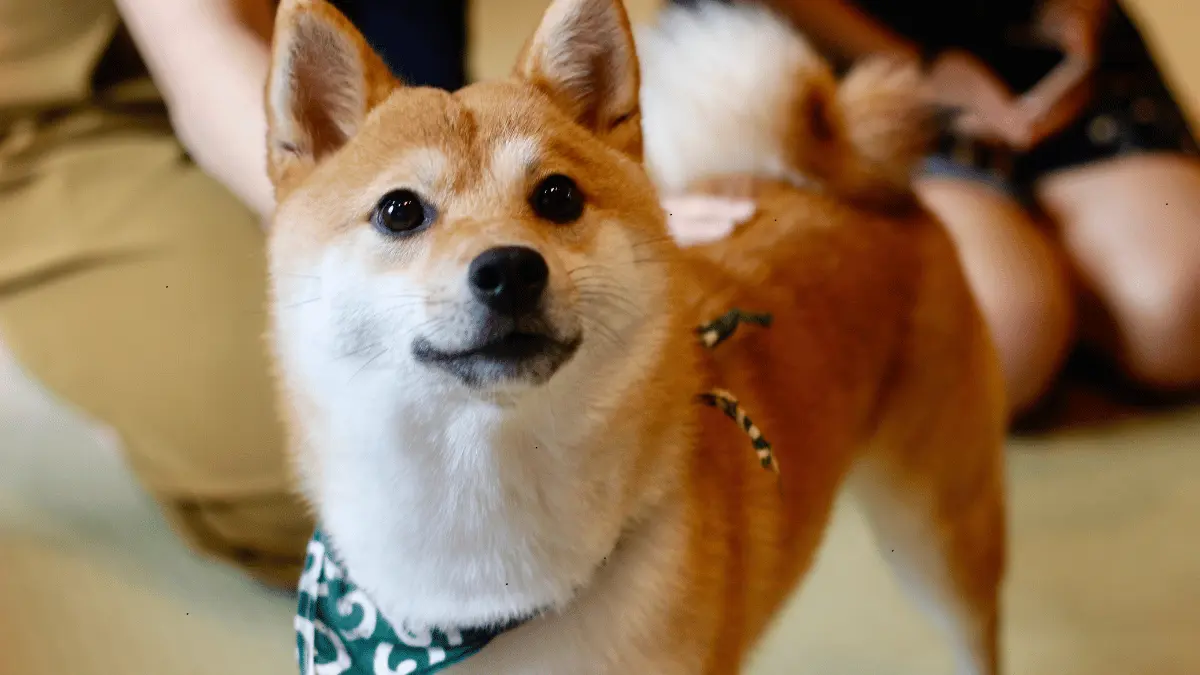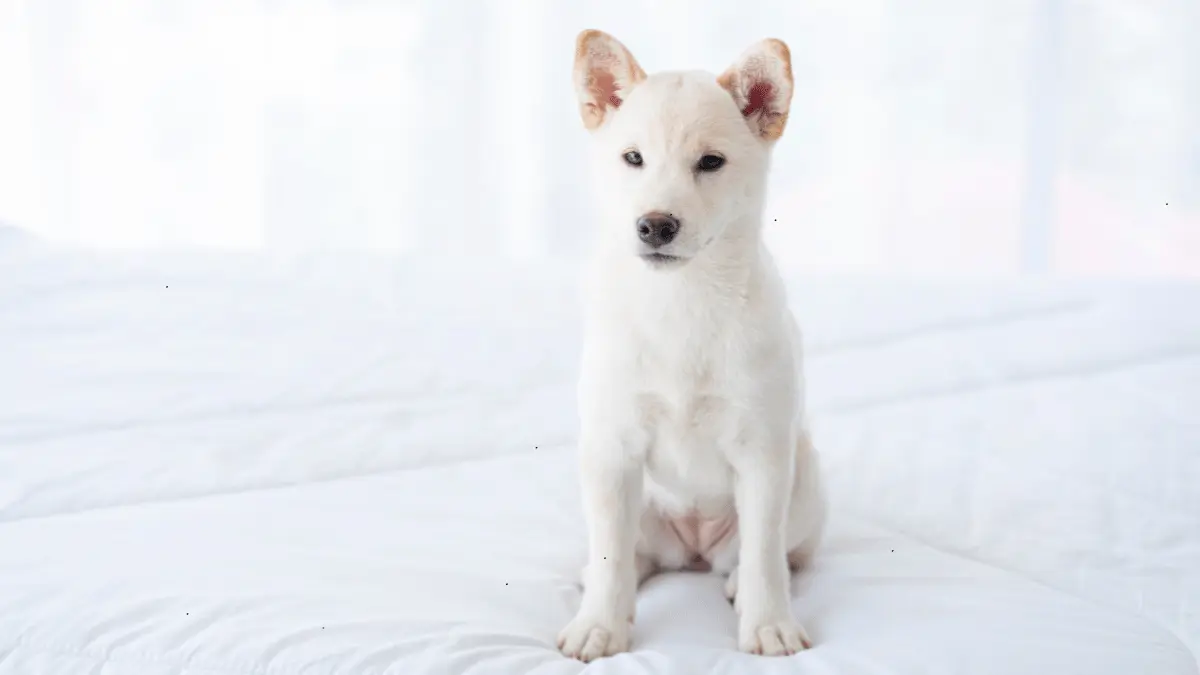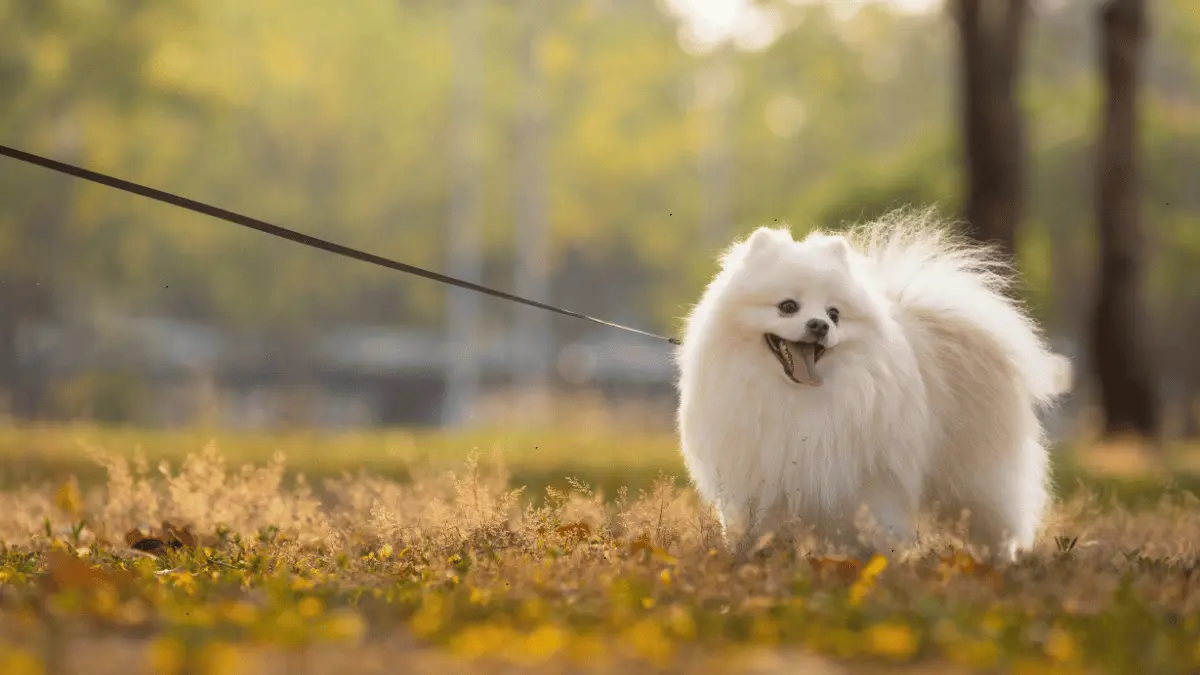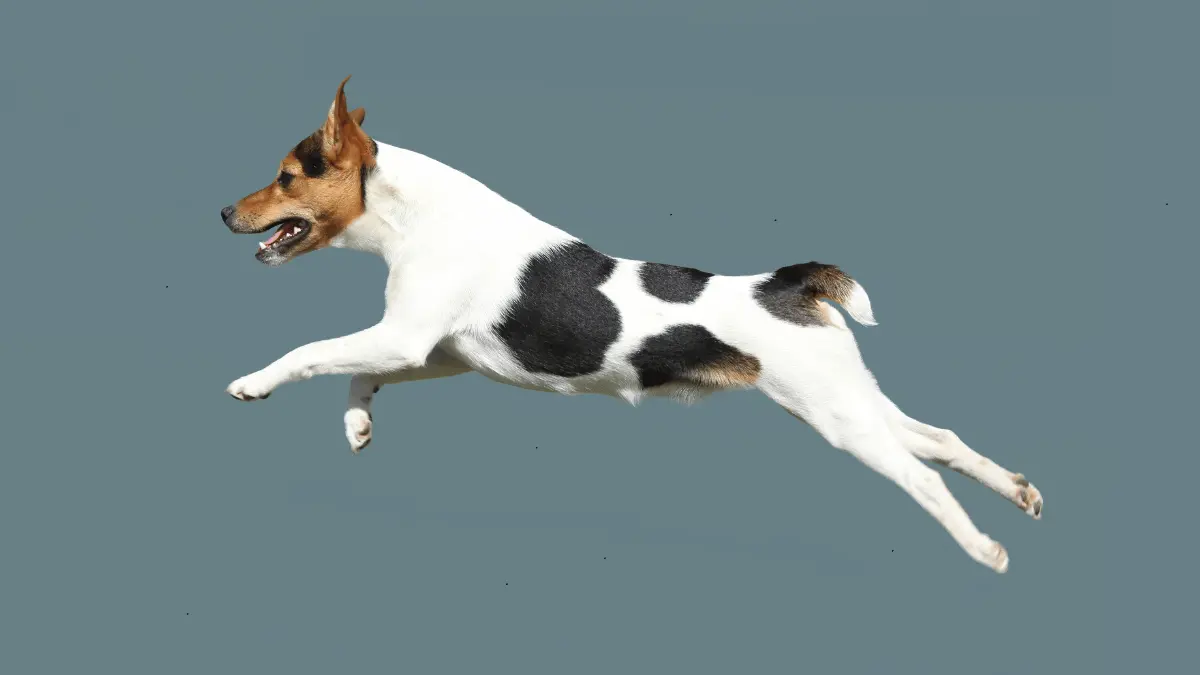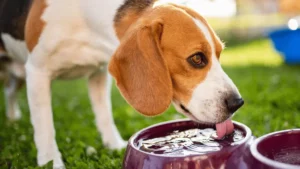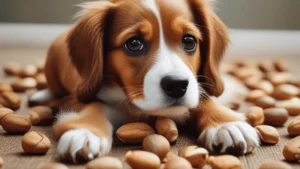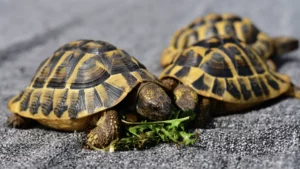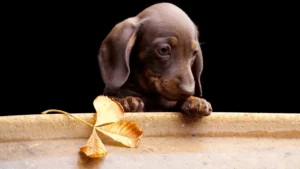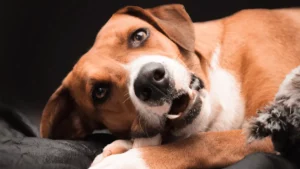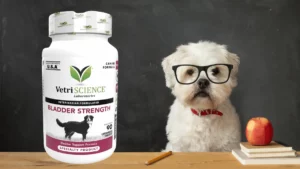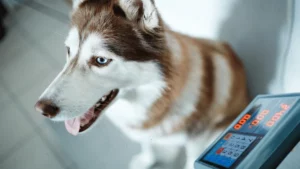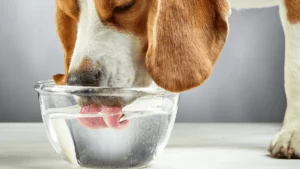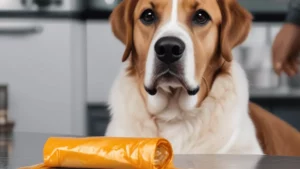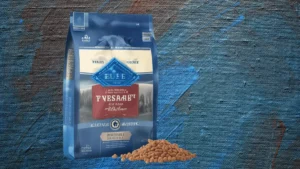Shiba Inu: The Spirited Companion
Discover the Shiba Inu, a spirited and loyal companion known for its playful personality and charming appearance. Perfect for families!
Shiba Inus are small yet energetic breeds from Japan that have captured the hearts of dog enthusiasts worldwide. Famous for their fox-like appearance and playful nature, Shiba Inus make great companions; here is more information on this delightful breed.
Quick Facts about Shiba Inu
Shiba Inus are small yet lively breeds hailing from Japan that have quickly won over dog lovers around the globe. Renowned for their fox-like appearance and playful temperament, these charming companions make great companions. Here is more on this delightful breed.
Origin and Size
The Shiba Inu is native to Japan, where it was initially bred for hunting small game. Although small in stature – males stand 14 to 16 inches at shoulder height and weight 23-27 pounds respectively while females typically reach 13-15 inches, and weigh 17-22 pounds – Shibas are well known for their confidence and alertness despite their diminutive stature.
Coat and Lifespan
Shiba Inus dogs boast thick double coats with different hues such as red, sesame, black and tan to create their striking appearance while providing protection from the elements. Living for 12-15 years means these loyal companions can continue being treasured companions long into the future.
Health Concerns
Shiba Inus are susceptible to certain health concerns. Common examples are hip dysplasia, elbow dysplasia and various eye issues; regular vet checks as well as leading an active lifestyle may help minimize these risks.
Activity Level
Shiba Inus are known for having a moderate activity level. Although daily exercise may be needed for their wellbeing and happiness, short daily walks may suffice – making them suitable for living environments from urban apartments to spacious houses.
Grooming Needs
Grooming a Shiba Inu can be relatively straightforward. Brushing them regularly to remove dead hair and prevent mats is recommended, while their double coat sheds seasonally so be prepared for more grooming during these periods.
Fun Facts
Shiba Inu is a Japanese term meaning “brushwood dog”, alluding to their original hunting grounds. Recently, they’ve made waves in cryptocurrency with the Shiba Inu (SHIB) coin — an amusing meme featuring them with surprised expressions!
Cheems Balltze, the beloved Shiba Inu who became synonymous with the “doge meme,” tragically passed away due to cancer-related issues in August 2023 – leaving an irreparable mark on meme culture and its community.
Considerations for Potential Homebuyers
If you are thinking about adding a Shiba Inu to your household, expect the price range between $1,400 and $3,500 from reputable breeders. Prices may differ based on breeding stock or coat color preferences; puppy mills should always be avoided as these operations often lead to health issues and unethical breeding practices; choosing responsible breeders ensures you receive a healthy puppy while supporting humane animal treatment practices.
The Shiba Inu is an adorable breed with an intriguing history and playful spirit, which can make an excellent addition to your family with proper care and affection.
Shiba Inu Overview
The Shiba Inu, a captivating breed from Japan, is recognized for its unique physical traits—pointed ears, squinty eyes, and a curly tail—evoking images of both a fox and a delightful plush toy. As one of the six spitz breeds native to Japan, the Shiba Inu has a rich history dating back centuries, making it a cherished family companion.
Temperament and Personality
Described by Japanese breeders using three terms—kaani-i (spirited boldness), ryosei (good nature), and soboku (alertness)—the Shiba Inu embodies an intriguing combination of intelligence, strength, and willfulness. Although relatively small, weighing around 20 pounds, these athletic dogs are agile and alert, making them exceptional watchdogs.
Shiba Inus have a dignified demeanor and a unique sense of independence, which can make training a challenge. Early socialization is crucial for fostering good behavior, helping them learn to interact positively with other dogs and people. Training should commence as soon as possible to instill proper canine manners while recognizing their independent spirit.
To achieve the best training results, owners must approach obedience with patience and creativity, convincing their Shiba Inu that following commands is their idea. Engaging an experienced trainer familiar with the breed can greatly enhance training outcomes. However, be aware that Shibas can exhibit possessiveness over their toys, food, and territory, which can lead to conflicts. Proper socialization and managing access to favorite items when around other pets or children can help mitigate these behaviors.
Socialization and Exercise Needs
Shiba Inus thrive on social interaction and physical activity. They are known for their spirited nature, which can sometimes result in aggressive behaviors, especially among intact males. It’s essential to supervise interactions with other dogs, as Shibas may not always get along with other males. For this reason, off-leash play is discouraged due to their natural hunting instincts and strong prey drive.
Regular exercise is vital for Shiba Inus, who enjoy daily walks or runs. A securely fenced yard is ideal for their active lifestyle, allowing them to explore safely while keeping them on a leash outside to prevent potential issues with aggression or escape.
Unique Characteristics
Shiba Inus have garnered internet fame, becoming stars of the “Doge” meme, which humorously captures their quirky expressions. Their grooming habits often lead to comparisons with cats, as they maintain cleanliness and can be quite particular about their environment. Additionally, Shibas are known for their distinct vocalizations, which can range from excitement to annoyance, often catching owners off guard.
These intelligent dogs are also escape artists, so ensuring a safe living environment is crucial. With a lifespan of 12 to 15 years, Shiba Inus provide many years of companionship, making them a valued addition to any family.
The Shiba Inu is a remarkable breed that captivates with its spirited personality and unique appearance. With proper training, socialization, and exercise, they can be delightful companions for families, bringing both joy and loyalty to their owners. Their independence and spirited nature may present challenges, but for those willing to invest time and effort, a Shiba Inu can be a rewarding addition to the family.
Keywords: Shiba Inu, Shiba Inu temperament, Shiba Inu training, Shiba Inu exercise needs, Shiba Inu lifespan, Shiba Inu characteristics, Shiba Inu family pet, Shiba Inu history, Shiba Inu grooming.
The History of the Shiba Inu
The Shiba Inu, one of Japan’s oldest and smallest native breeds, shares its ancestry with other notable dogs such as the Akita, Shikoku, Hokkaido, and Kishu. Originally bred for hunting, Shiba Inus were skilled at flushing out small game and birds, showcasing their agility and keen instincts.
Origins of the Name
The etymology of “Shiba Inu” is intriguing, with several theories regarding its name. One popular interpretation is that “Shiba” means “brushwood,” reflecting the breed’s historical role in navigating dense underbrush during hunts. Another theory suggests that their vibrant red coat resembles the autumn leaves found in such environments. Lastly, an archaic definition of “Shiba” refers to small size, which also aligns with the breed’s compact stature.
The Impact of World War II
The Shiba Inu faced near extinction during World War II. While many dogs survived bombing raids, a devastating outbreak of distemper in the postwar period claimed numerous lives. In the aftermath, dedicated breeders sought to revive the breed by bringing Shiba Inus back from rural areas and launching new breeding programs. This effort was crucial in preserving the breed and ensuring its survival.
Development and Recognition
Over time, Shiba Inus were interbred with other dog breeds, leading to the development of the modern Shiba Inu we know today. In 1948, the Nihon Ken Hozonkai (Japanese Dog Preservation Society) established the breed standard, which was later recognized by the Japan Kennel Club (JKC) and the Fédération Cynologique Internationale (FCI).
The first Shiba Inu was imported to the United States by an American service family in 1954. However, the breed remained relatively unknown until the late 1970s, when the first litter was born in the U.S. In 1993, the American Kennel Club (AKC) recognized the Shiba Inu as part of the Miscellaneous Class, and by 1997, it was officially classified within the Non-Sporting Group.
Today, the Shiba Inu is celebrated not only for its stunning appearance and spirited personality but also for its rich history and cultural significance. As one of Japan’s most cherished dog breeds, the Shiba Inu continues to capture the hearts of dog lovers worldwide, embodying both beauty and resilience.
Keywords: Shiba Inu, history of Shiba Inu, Japanese dog breeds, hunting dogs, Shiba Inu characteristics, Shiba Inu care, Shiba Inu recognition, dog breeds in America.
Shiba Inu Size
Male Shiba Inus typically stand 14.5 to 16.5 inches tall and weigh about 23 pounds, while female Shibas typically stand 13-55 inches high and are estimated to weigh 17-18 pounds.
Understanding the Personality of a Shiba Inu
The Shiba Inu is a captivating breed known for its spirited personality and distinctive traits. When well-bred, a Shiba Inu typically exhibits friendliness, alertness, and boldness. However, it’s essential to recognize their independent nature; they often think for themselves and may not always conform to typical dog behavior. This breed is loyal to its family but can be suspicious of strangers, making them excellent watchdogs.
Characteristics of Shiba Inus
Shiba Inus tend to guard their food, toys, and territory aggressively, and they may not be willing to share. While they can be delightful companions, they also pose challenges, especially if they are not neutered or spayed. Their strong prey drive means they may chase smaller animals, which can be a concern in certain environments.
Training a Shiba Inu requires a unique approach. Unlike breeds such as Golden Retrievers, who respond eagerly to calls, Shiba Inus may only come when they feel like it. This breed is often described as stubborn; however, a more accurate term might be “free-thinking.” Their temperament is influenced by several factors, including heredity, training, and socialization.
The Importance of Temperament
When selecting a Shiba Inu puppy, look for one with a well-rounded temperament. Ideally, a healthy Shiba Inu puppy will be playful, curious, and eager to engage with people. Avoid puppies that exhibit overly dominant or shy behaviors. Meeting at least one parent, typically the mother, can give you insight into the temperament you might expect in your new puppy.
Additionally, evaluating the siblings and relatives of both parents can provide a clearer picture of how your Shiba Inu may mature. Just like all dogs, Shiba Inus thrive with early socialization. This exposure to diverse people, sights, sounds, and experiences from a young age is crucial for developing an emotionally balanced dog.
Socialization Techniques
Enrolling your Shiba Inu in puppy kindergarten can be particularly beneficial. Regular visits from guests, outings to dog-friendly parks, and leisurely walks will help refine your dog’s social skills. The more varied the experiences your Shiba Inu has early on, the more confident and well-adjusted they will become.
In summary, a Shiba Inu is a remarkable breed characterized by its loyalty, boldness, and independence. While they require consistent training and early socialization to thrive, the bond you form with a well-cared-for Shiba Inu is incredibly rewarding. With the right approach, you can ensure that your Shiba Inu becomes a cherished member of your family.
Keywords: Shiba Inu personality, Shiba Inu traits, independent dog breeds, Shiba Inu training, puppy socialization, Shiba Inu temperament, dog training techniques, benefits of early socialization.
Shiba Inu Health: What You Need to Know
Shiba Inus are generally known for their spirited personality and distinctive appearance, but like all dog breeds, they can be prone to specific health conditions. Understanding these potential health issues is crucial for prospective Shiba Inu owners. When considering bringing a Shiba Inu into your home, it’s important to work with a reputable breeder who provides health clearances for both the puppy’s parents. These clearances confirm that the parents have been tested for common hereditary conditions.
Key Health Clearances to Look For
When evaluating a breeder, you should expect to see health clearances from:
- Orthopedic Foundation for Animals (OFA): This includes tests for hip dysplasia (a score of fair or better), elbow dysplasia, hypothyroidism, and von Willebrand’s disease.
- Auburn University: Testing for thrombopathia.
- Canine Eye Registry Foundation (CERF): Certification that the eyes are normal.
You can verify these health clearances through the OFA website (offa.org), ensuring your future puppy is in good health.
Common Health Issues in Shiba Inus
1. Allergies: Allergies are common among Shiba Inus and can manifest in three main forms:
- Food Allergies: Managed through an elimination diet.
- Contact Allergies: Result from reactions to topical substances like bedding or shampoos.
- Inhalant Allergies: Triggered by airborne allergens such as pollen and dust.
Treatment may include dietary changes, medications, and adjustments to the dog’s environment.
2. Chylothorax: Chylothorax involves fluid accumulation in the chest cavity, leading to symptoms like difficulty breathing, decreased appetite, coughing, and lethargy. Treatment options vary from fluid removal and dietary changes to surgery in severe cases.
3. Glaucoma: Glaucoma, characterized by increased eye pressure, can result in vision loss and pain. It can be primary (hereditary) or secondary (caused by other eye conditions). Treatment may include surgery or medication.
4. Cancer: Signs of cancer in dogs include abnormal swellings, non-healing sores, bleeding, and difficulty breathing. Treatment often involves chemotherapy, surgery, or medications, depending on the type and stage of cancer.
5. Epilepsy: Epilepsy can cause seizures, which may present as unusual behavior, such as frantic running or hiding. While seizures can be alarming, many dogs with idiopathic epilepsy can lead normal lives with proper management.
6. Patellar Luxation: Patellar luxation occurs when the kneecap dislocates, causing pain and potential mobility issues. While some dogs may live relatively normal lives with this condition, it can be crippling for others.
7. Hypothyroidism: This thyroid disorder can lead to symptoms such as hair loss, obesity, lethargy, and skin issues. Treatment typically involves medication and dietary management.
8. Progressive Retinal Atrophy (PRA): PRA is a degenerative eye condition that leads to night blindness and eventually loss of daytime vision. Many dogs adapt well to vision loss, especially if their environment remains consistent.
9. Hip Dysplasia: Hip dysplasia is a hereditary condition where the thighbone does not fit properly into the hip joint. Symptoms may not be immediately noticeable, but as dogs age, arthritis can develop. Affected dogs should not be bred, and health clearances should be obtained from breeders.
10. Tail Chasing/Spinning: Tail chasing is a peculiar behavior that can begin around six months of age. Dogs may become obsessed with their tails, leading to hours of circling and loss of interest in food. Some research suggests this behavior may be related to seizure activity, and treatment may include medications like phenobarbital.
While Shiba Inus are generally healthy dogs, being aware of these potential health issues can help you provide the best care for your furry friend. Always consult with a veterinarian for proper health assessments and to ensure that your Shiba Inu remains happy and healthy throughout its life.
Keywords: Shiba Inu health, common health issues in Shiba Inu, Shiba Inu allergies, Chylothorax in dogs, glaucoma in Shiba Inu, canine cancer symptoms, epilepsy in dogs, patellar luxation treatment, hypothyroidism in Shiba Inu, PRA in dogs, hip dysplasia, tail chasing behavior in dogs.
Shiba Inu Care
The Shiba Inu is a lively and spirited breed, ideally suited for homes with a fenced yard. Known for their playful nature, these dogs enjoy activities such as walking, jogging, and simply exploring their surroundings. Providing ample space for your Shiba Inu to roam and play is essential for keeping them happy and healthy.
Importance of Socialization
Socialization is crucial for Shiba Inus. Like any dog, a lack of social interaction can lead to timidity or aggressive behaviors, especially towards other dogs. Early exposure to various people, sights, sounds, and experiences helps your Shiba Inu grow into a well-rounded adult. This breed is naturally suspicious of strangers, making early socialization even more important.
Prey Drive and Safety
Shiba Inus possess a strong prey drive, often chasing after small animals like cats or squirrels. For this reason, it’s essential to keep your Shiba Inu on a leash whenever they are outside the safety of your fenced yard. Interestingly, this breed tends to dislike restraint, making leash training a necessary but sometimes challenging task.
Leash Training Tips
Leash training requires time and patience. Enrolling your Shiba Inu in puppy and obedience classes is highly recommended, not just for the lessons but also for the socialization and stimulation these environments provide. Work with a trainer experienced in handling Shiba Inus, as their strong-willed nature can make training challenging. Approach this as an opportunity to strengthen your bond.
Housebreaking Made Easy
Housebreaking your Shiba Inu can be a straightforward process. Once they learn where to go, they are likely to use that area consistently. Crate training serves as an effective housetraining aid and provides a secure retreat for your dog. A crate should not be used as a punishment; instead, it should be a comfortable space where your Shiba Inu can relax and nap.
Crate Training Guidelines
Introduce crate training early to help your Shiba Inu become accustomed to confinement. This is especially beneficial if your dog ever needs to be boarded or hospitalized. However, it’s important to note that your Shiba Inu should never be crated for extended periods. A crate is not a jail; your dog should spend only a few hours in it during the day, except for overnight sleeping.
Caring for a Shiba Inu involves understanding their unique needs for space, socialization, and training. By providing a loving environment and proper training, you can ensure that your Shiba Inu thrives as a happy and well-adjusted family member.
Keywords: Shiba Inu care, Shiba Inu training, Shiba Inu socialization, Shiba Inu housebreaking, leash training Shiba Inu, crate training Shiba Inu.
Shiba Inu Feeding
Shiba Inus, with their spirited and independent nature, require a balanced diet to maintain their optimal health and energy levels. The recommended daily amount of high-quality dry food for a Shiba Inu is typically between 1/2 to 1.5 cups, divided into two meals. However, individual needs may vary based on factors such as size, age, activity level, and metabolism.
Tailoring Your Shiba Inu’s Diet
- Size and Age: Smaller Shiba Inus may require less food than larger ones, and puppies will have different nutritional needs compared to adults.
- Activity Level: Highly active dogs, such as those involved in agility training or frequent walks, will need more calories to support their energy expenditure.
- Metabolism: Some Shiba Inus may have naturally higher or lower metabolisms, which can influence their food requirements.
The Importance of Quality Dog Food
Investing in high-quality dog food can make a significant difference in your Shiba Inu’s overall health and well-being. Good quality food is more nutrient-dense, meaning you may need to feed less to meet your dog’s needs. Additionally, it can help support healthy skin, coat, and digestive function.
Feeding Frequency and Portion Control
Feeding your Shiba Inu twice a day can help regulate their blood sugar levels and prevent overeating. It’s also important to measure their food portions to ensure they are getting the appropriate amount. Avoid leaving food out all day, as this can contribute to weight gain and other health issues.
Assessing Your Shiba Inu’s Weight
To determine if your Shiba Inu is at a healthy weight, perform a visual and hands-on assessment:
- Visual Check: Look at your dog from above. You should be able to see a clear waistline.
- Hands-on Test: Gently feel your dog’s ribs. You should be able to feel them without pressing too hard, but they should not be overly prominent.
If your Shiba Inu is overweight or underweight, consult with your veterinarian to develop a tailored feeding plan.
Additional Feeding Considerations
- Fresh Water: Ensure your Shiba Inu always has access to fresh, clean water.
- Treats: While treats can be a reward, they should be given in moderation to avoid excessive calorie intake.
- Feeding Supplements: If your veterinarian recommends supplements, follow their guidelines carefully.
By providing your Shiba Inu with a balanced diet, regular exercise, and veterinary care, you can help them live a long and healthy life. Remember, each Shiba Inu is unique, so it’s essential to monitor their individual needs and adjust their diet accordingly.
Keywords: Shiba Inu feeding, dog food, nutrition, healthy weight, portion control, dog care, pet health.
Shiba Inu Coat Color and Grooming
The Shiba Inu’s iconic double coat, renowned for its Teddy Bear-like texture, is a hallmark of the breed. The outer coat is characterized by its stiffness and straightness, while the undercoat is soft and dense. This combination offers excellent insulation, protecting the Shiba from both extreme heat and cold.
Coat Colors and Markings
Shiba Inus come in three primary coat colors:
- Orange-Red: This is the most common color, featuring a vibrant orange-red hue.
- Urajiro: Characterized by a cream to white ventral color, contrasting with the darker coat on the back and head.
- Sesame: A rich red base coat with black-tipped hairs, creating a unique speckled pattern.
White markings are often seen on the tip of the tail, forelegs, and hind legs, adding to the Shiba Inu’s distinctive appearance.
Grooming Essentials
- Brushing: Regular brushing is crucial to maintain the health and appearance of your Shiba Inu’s coat. A weekly brushing session is generally sufficient, but this frequency may increase during shedding seasons.
- Bathing: While Shibas are naturally clean, occasional baths are necessary to remove dirt and oils. However, over-bathing can dry out their skin, so aim for every three to four months.
- Dental Care: Oral hygiene is essential for preventing dental problems. Brush your Shiba’s teeth at least two or three times a week to remove tartar buildup and bacteria.
- Nail Trimming: Regular nail trimming is crucial to prevent painful tears and other issues. Trim your Shiba’s nails once or twice a month, being cautious not to cut into the quick (the blood vessel within the nail).
- Ear Cleaning: Check your Shiba’s ears weekly for signs of infection, such as redness or a bad odor. Gently clean the outer ear with a damp cotton ball and pH-balanced ear cleaner.
Grooming Tips
- Start Early: Begin accustoming your Shiba Inu to grooming from a young age to make it a positive experience.
- Positive Reinforcement: Use praise and rewards to associate grooming with positive experiences.
- Regular Checks: During grooming sessions, carefully examine your Shiba’s skin, nose, mouth, eyes, and feet for any signs of health problems.
The Shiba Inu’s double coat requires regular grooming to maintain its health and appearance. By following these guidelines and providing consistent care, you can ensure your Shiba Inu’s coat remains beautiful and their overall health is optimal.
Keywords: Shiba Inu, coat color, grooming, brushing, bathing, dental care, nail trimming, ear cleaning, health, maintenance.
Shiba Inu and Family
Shiba Inus, often described as “little foxes,” can make wonderful family dogs when raised and trained appropriately. Their loyal and independent nature, combined with their affectionate side, can create a strong bond with their human companions.
Interactions with Children
While Shiba Inus generally get along well with children, it’s essential to teach children how to interact with dogs respectfully. Always supervise interactions between dogs and young children to prevent accidents or misunderstandings.
- Teach Proper Interactions: Educate children about the importance of gentle touches and avoiding disturbing the dog while eating or sleeping.
- Set Boundaries: Never leave a dog unsupervised with a child, regardless of how friendly the dog may seem.
Socialization and Training
Early socialization and training are crucial for Shiba Inus to develop harmonious relationships with other dogs and animals. While training can mitigate aggressive tendencies, it’s important to recognize that Shiba Inus may have a prey drive and may chase smaller animals.
- Positive Reinforcement: Use positive reinforcement techniques to teach your Shiba Inu appropriate behaviors and avoid harsh methods that can lead to fear or aggression.
- Leash Training: Keep your Shiba Inu on a leash in public areas to prevent unwanted interactions with other dogs or animals.
Creating a Harmonious Environment
- Introduce Gradually: If you have other pets, introduce them to your Shiba Inu slowly and in a controlled environment.
- Respect Boundaries: Be mindful of your Shiba Inu’s personal space and avoid forcing them into uncomfortable situations.
- Consistent Training: Maintain consistent training and socialization throughout your Shiba Inu’s life to reinforce positive behaviors.
Shiba Inus can be wonderful family companions when raised and trained with care. By understanding their unique temperament and providing appropriate socialization, you can create a harmonious environment for your Shiba Inu and your family.
Keywords: Shiba Inu, family dog, children, pets, socialization, training, aggression, prey drive, harmony.
Shiba Inu and Other Pets
Shiba Inus, with their independent and spirited nature, can coexist peacefully with other pets when properly introduced and trained. However, it’s important to understand their unique temperament and take necessary precautions to ensure harmony within your household.
Introducing a Shiba Inu to Other Pets
- Gradual Introduction: Introduce your Shiba Inu to other pets slowly and in a neutral environment.
- Supervision: Always supervise interactions between your Shiba Inu and other pets, especially during initial meetings.
- Positive Reinforcement: Reward calm and appropriate behavior from both your Shiba Inu and other pets.
Coexistence with Dogs
- Socialization: Early socialization is crucial for Shiba Inus to get along with other dogs. Expose your Shiba Inu to various dogs in a controlled environment.
- Dominance: Shiba Inus can be dominant, so it’s important to establish clear boundaries and leadership.
- Leash Training: Keep your Shiba Inu on a leash in public areas to prevent unwanted interactions with other dogs.
Coexistence with Cats
- Slow Introduction: Introduce your Shiba Inu to cats gradually, allowing them to sniff each other through a secure barrier.
- Supervision: Always supervise interactions between your Shiba Inu and cats, especially during initial meetings.
- Playtime: Provide separate playtime for your Shiba Inu and cats to prevent territorial disputes.
Coexistence with Small Animals
- Prey Drive: Shiba Inus have a strong prey drive, so caution is necessary when introducing them to small animals like rodents or birds.
- Supervision: Never leave your Shiba Inu unsupervised with small animals.
- Secure Enclosures: Keep small animals in secure enclosures to prevent interactions.
Tips for Coexistence
- Positive Reinforcement: Use positive reinforcement techniques to encourage appropriate behavior from all pets.
- Patience: Building a harmonious relationship between your Shiba Inu and other pets may take time and patience.
- Respect Boundaries: Be mindful of each pet’s personal space and avoid forcing them into uncomfortable situations.
- Veterinary Advice: If you have concerns about your Shiba Inu’s interactions with other pets, consult with a veterinarian for guidance.
Shiba Inus can coexist peacefully with other pets when proper introductions, socialization, and training are implemented. By understanding their unique temperament and taking necessary precautions, you can create a harmonious and loving environment for all your pets.
Keywords: Shiba Inu, other pets, coexistence, introduction, socialization, training, dogs, cats, small animals, harmony.
Shiba Inu Rescue
Shiba Inus, with their fiery personalities and captivating looks, have become increasingly popular. However, many people often underestimate the unique challenges of owning one. As a result, a significant number of Shibas find themselves in need of loving homes.
Why Choose a Shiba Inu Rescue?
Adopting a Shiba Inu from a rescue organization offers several advantages:
- Saving Lives: You’re providing a second chance to a dog who might otherwise be overlooked.
- Adopting a Trained Dog: Many rescue Shibas come with basic training, making the transition into your home smoother.
- Supporting a Good Cause: You’re contributing to the important work of rescue organizations.
Finding a Shiba Inu Rescue Near You
If you’re looking to adopt or foster a Shiba Inu, there are several resources available:
- National Shiba Inu Rescue Organizations: These organizations can connect you with rescues in your area.
- Local Shiba Inu Clubs: Breed clubs often have rescue committees or can provide information on local rescues.
- Online Adoption Websites: Websites like Petfinder and Adopt-a-Pet can help you find Shiba Inu rescues in your area.
Popular Shiba Inu Rescue Organizations
- Shiba Inu Rescue Association: Dedicated to rescuing and rehoming Shiba Inus nationwide.
- Midwest Shiba Inu Rescue: Serving the Midwest region of the United States.
Adopting a Shiba Inu from a rescue organization can be a rewarding experience. By giving a homeless Shiba a loving home, you’re not only saving a life but also gaining a loyal and affectionate companion.
Keywords: Shiba Inu rescue, adopt a Shiba Inu, Shiba Inu adoption, Shiba Inu foster, Shiba Inu rescue organizations, Midwest Shiba Inu Rescue, Shiba Inu temperament, Shiba Inu care
Finding a Reputable Shiba Inu Breeder
When adding a Shiba Inu to your family, finding a reputable breeder is paramount in order to ensure a healthy and happy puppy. A responsible breeder prioritizes the health, temperament and overall well-being of their dogs by adhering to stringent breeding standards, screening their stock for genetic diseases and providing comprehensive health testing. Furthermore, such breeders socialize puppies from an early age in order to ensure confident adult dogs.
Recognizing Backyard Breeders
Unfortunately, not all breeders put the welfare of their dogs first. Backyard breeders in particular can put profit before animal care; often neglecting essential health testing, proper socialization and ethical breeding practices that could contribute to more health problems, behavioral issues or shorter lifespans in puppies from these backyard breeders. Therefore, it’s vital that consumers remain vigilant and recognize reputable breeders from those that may compromise on care.
Steps to Find a Reputable Shiba Inu Breeder
- Research Shiba Inu Organizations: Begin your search by joining local Shiba Inu clubs or breed-specific organizations that offer valuable resources, support, and recommendations in finding reliable breeders.
- Seek Recommendations: Seek out recommendations from Shiba Inu owners, veterinarians or breed experts. Word-of-mouth referrals can often be the most reliable method of locating reliable breeders.
- Visit the Breeder: Make an appointment to visit a prospective breeder’s facility, observe how the dogs live, meet their parents, and ask about breeding practices. A responsible breeder will be upfront about their methods while also being eager to answer any of your queries.
- Request Health Records: Reputable breeders will offer health clearances and genetic testing results on all their breeding dogs, making it easy for you to verify the health of the puppy’s lineage. Ensure you review these documents so you know who produced your puppy!
- Trust Your Instincts: If anything seems off during interactions with a breeder, don’t be reluctant to walk away if something feels amiss. Follow your gut and select one who makes you comfortable and secure in their practices.
Acquiring a Shiba Inu puppy is a major commitment, so finding a reliable breeder is vital in making sure they will live long, happy lives in your family home. By conducting extensive research, asking pertinent questions and visiting their facility you increase the odds of finding someone who shares your dedication for caring for these amazing canines.
Overall, investing time and effort in finding a trustworthy Shiba Inu breeder will pay dividends over time. A responsible breeder not only adheres to ethical breeding practices but also prioritizes health and socialization when raising their puppies – thus guaranteeing you welcome an intelligent pet into your home!
Keywords: Shiba Inu, reputable breeder, backyard breeder, puppy health, dog health, dog adoption, breed standards, genetic testing, socialization, ethical breeding practices.
